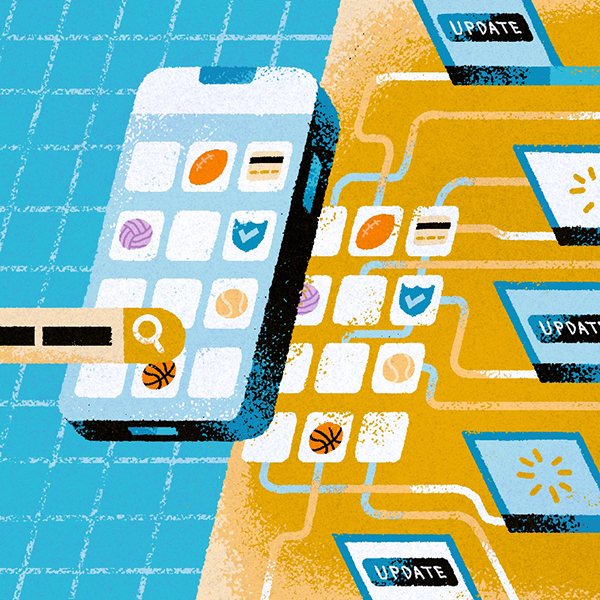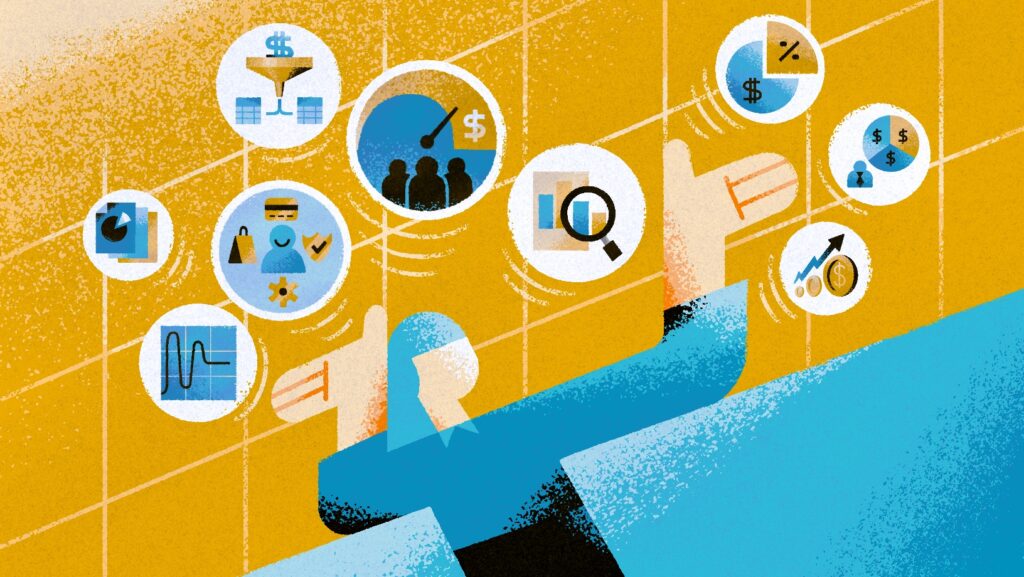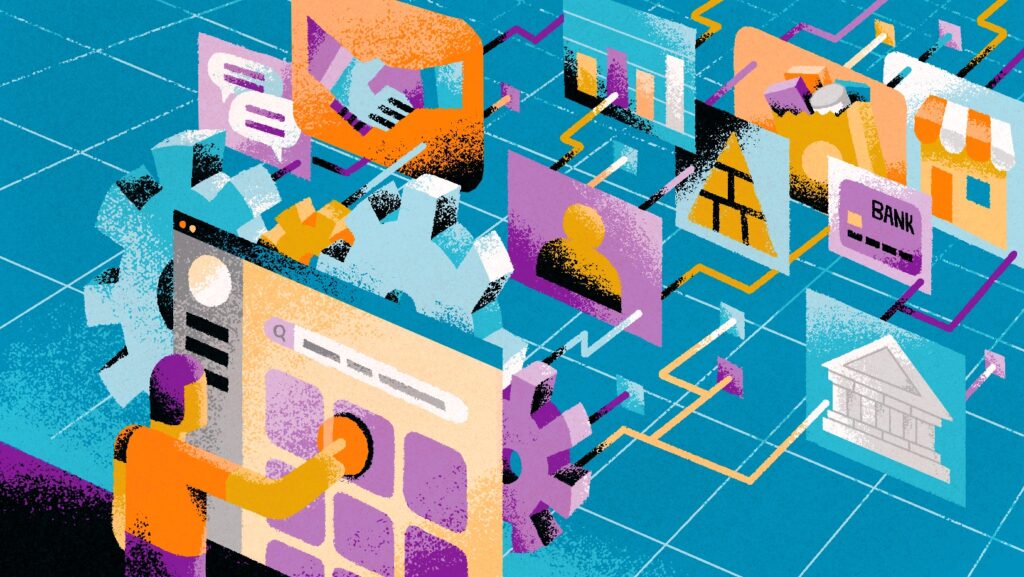By Justin Kaufenberg, Managing Director at Rally Ventures and Former CEO and Co-Founder of SportsEngine.
In our last SaaS+ Series article, we covered the six core architectural concepts you need to think about when building a SaaS+ company. There are a number of benefits that come from putting the right building blocks in place from the start and creating a strong core platform.
One major benefit is the option of hosting a search and discovery marketplace. When you’re working with hundreds or thousands of different businesses on a platform, you can leverage all of the information you have to build a search and discovery marketplace.
This is something that is nearly impossible to do unless you have a platform because you would otherwise have to manually input millions of pieces of data. However, if you first onboard businesses as customers to your platform, they’ll constantly update their own information because they’re using your platform to run their business. And then all you need to do is turn on public view so the world can search it.
The benefits of a well-run marketplace are numerous: a far more valuable user experience for your customers, a differentiated product and new revenue streams.
What is a search and discovery marketplace?
A great search and discovery marketplace is the direct result of a B2B relationship. At SportsEngine, one of the early products we considered was a marketplace that would list all available youth sports participation opportunities. What we quickly found out was that it takes an enormous amount of time and money to build a marketplace from scratch, because you’d have to individually gather data from thousands of sources and then keep the information updated on a daily basis.
This requires dozens of people who are constantly inputting information or web scraping to find the millions of tournaments, leagues, associations and other youth sports activities that occur every year. And then, the moment you enter the information, it becomes outdated because a tournament date passes, rain out dates occur, etc. It takes an army of people to keep it all up-to-date and it’s very costly, which is why manually generated B2C marketplaces have often failed.
What we eventually figured out is that successful marketplaces almost always exist as a B2B relationship first. Since customers are using your platform to run their business, they’re constantly updating their own information. And then all of that updated data flows out of the core software platform and into the public marketplace. You never have to input any information on your own.
SportsEngine went on to run the world’s largest search and discovery engine for youth sports. OpenTable is another great example of a marketplace that results from existing B2B relationships. Restaurants use OpenTable to manage their restaurant operations and process reservations, which results in a real-time restaurant reservation marketplace for diners.
Similarly, GolfNow is used by golf courses to manage their golf course and clubhouse operations, and, as a result, GolfNow is able to produce a massive tee time booking marketplace, showing thousands of available tee times from thousands of courses every day, with no manual data entry from GolfNow employees.
What are the main benefits of a marketplace?
Search and discovery marketplaces provide an enormous benefit to the businesses who use your core software platform to run their business. When we initially activated our marketplace at SportsEngine, we worried it was something people wouldn’t consent to, but it turns out that wasn’t an issue at all. Customers loved it, and it not only became widely accepted, but highly desired. The benefits became quickly apparent to our customers.
It was a key differentiator between SportsEngine and our competitors. Customers not only got the SportsEngine software to run their youth sports businesses, they also got access to the marketplace at no additional cost. The marketplace resulted in more people discovering their organization, more kids participating in their programs and more revenue. The marketplace feature was a huge benefit to our B2B sales team. It got deals done that wouldn’t otherwise have closed.
Rally Ventures exclusively invests in B2B technologies, but we are a big fan of B2B2C relationships. There are many successful direct B2C companies out there, but they’re expensive to build and the failure rate is high. However, when you have a B2C marketplace as the result of a B2B relationship first, then you can embrace the consumer relationship without having to absorb much of the risk.
For example, SportsEngine is primarily a consumer product. It’s a place for moms and dads to search for youth sports opportunities. But we as a platform only sold to other businesses — rec leagues, associations, tournaments etc. The B2C marketplace could only exist because all of these organizations updated their own information, and then we pulled the data out of the B2B relationship into the marketplace. This B2C marketplace then opens up a whole host of other business models that wouldn’t otherwise exist in a strictly B2B model. You can now sell equipment, insurance, uniforms and other products directly to consumers.
The last primary benefit is that the marketplace itself becomes a discreet revenue driver. Once you have thousands of businesses listed, you can deploy an advertising model. For a marketing fee, companies can be moved up the listing and featured in search results.
What do you need to build first in order to have a successful marketplace?
In order to build a successful search and discovery marketplace, you first need to build a robust and architecturally sound platform. We previously wrote about the six most important things to know about SaaS+ product architecture. You need to do all of these things well in order to successfully launch a marketplace.
For example, if you don’t have a single instance of a human, the entire marketplace will be broken before it’s even launched. Single instance of a human refers to how each person/entity only has one profile and it’s used across the platform. If, for example, a customer were to login to OpenTable and see multiple profiles of the same restaurant, all trust would be lost. The customer wouldn’t know which one to select or if one of them was fraudulent.
All six concepts are absolutely fundamental.
What other tips are helpful in the building of a marketplace?
Every B2B customer has to opt in to the marketplace. You have to commit and be prepared to say no to customers who try to opt out. You will inevitably have some customers who don’t want to join a public marketplace, but it’s important to take the time and work through their objections in order to have a robust marketplace.
Don’t charge advertising fees for the first year. Start the marketplace with no preferential treatment. If you start with preferential treatment, it will feel more obvious that the platform does have an advertising model in place and is making money from the marketplace. In year 2, you can start to implement an advertising model where customers can pay to be ranked higher.
A well-executed search and discovery marketplace can serve as a powerful tool for platforms. The marketplace provides substantial advantages for both platform providers and businesses using the technology, with benefits extending far beyond a more valuable customer experience to a highly differentiated product and new revenue streams.
This article originally appeared in TechCrunch, where Justin Kaufenberg is a contributing author on topics related to SaaS+, fintech and entrepreneurship.



